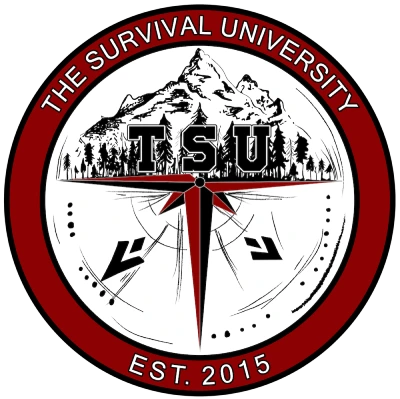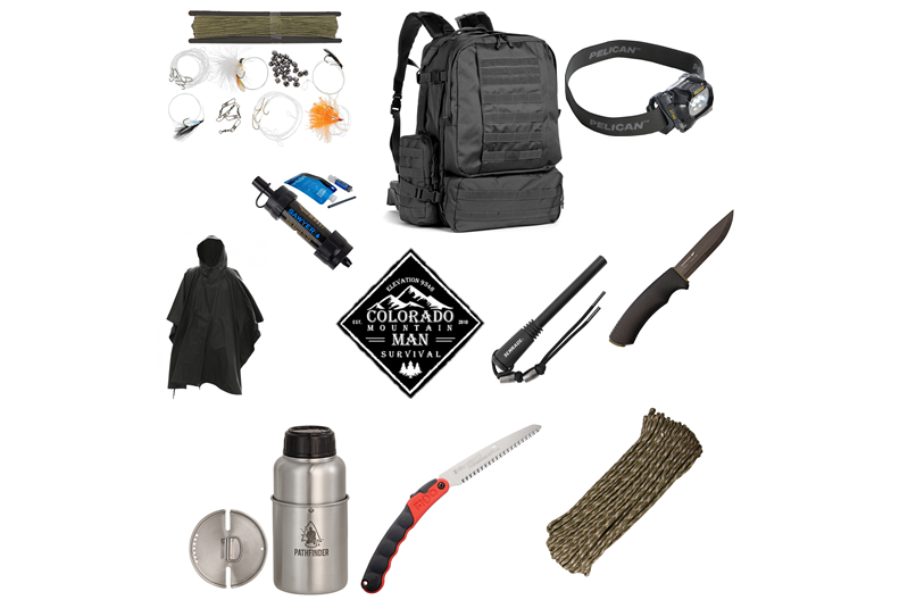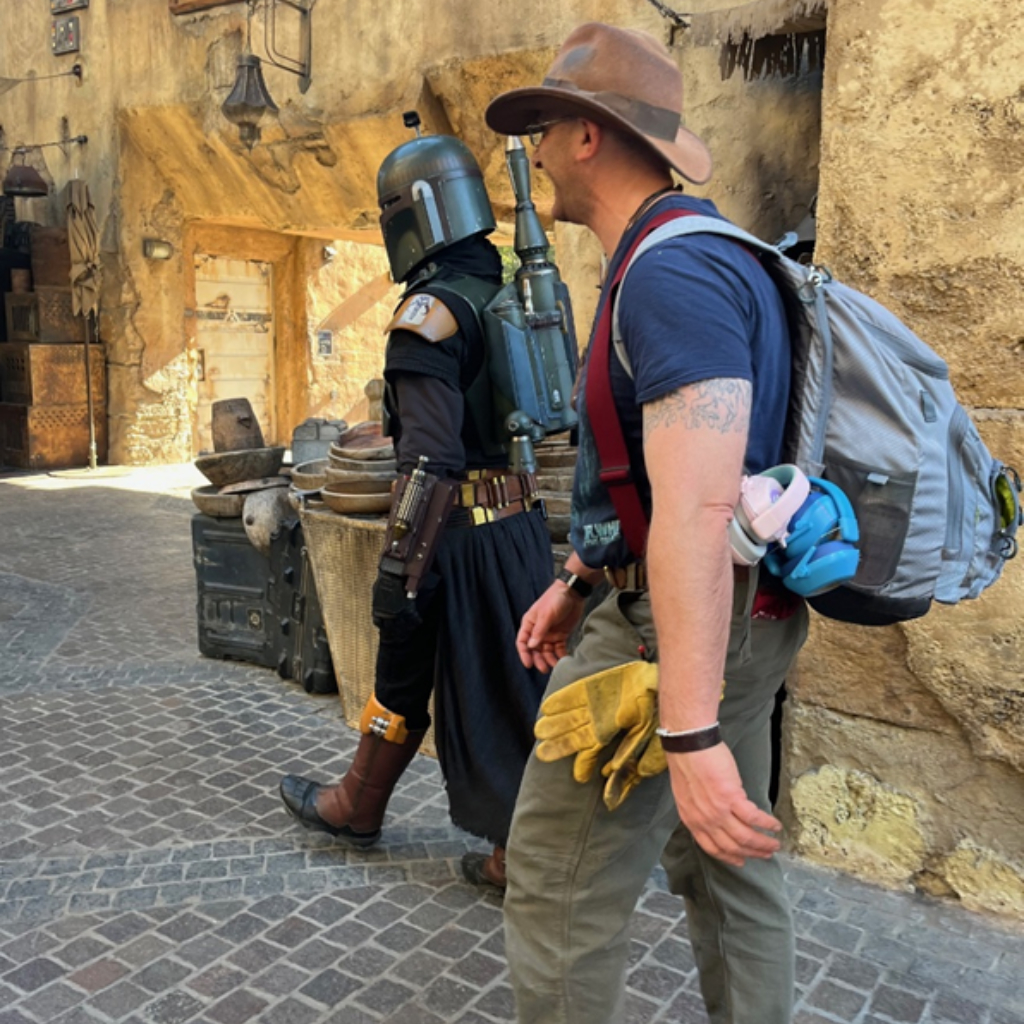Cart
13 min read
Mastering Fire for Survival: How to Pack a TRUE emergency fire kit
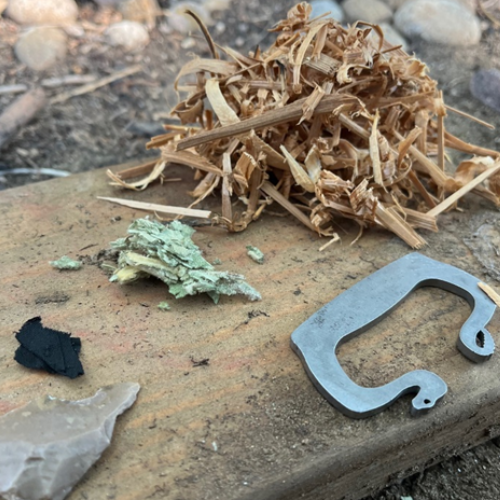
Mastering Fire for Survival: Packing a Fire Kit for Warmth, Cooking, and Signaling or How to Pack a TRUE emergency fire kit.
At least one time a year, we have a student pull out a fire kit that I would describe as unreal. This kit likely contains just about every fire hack known to YouTube—a few ferro rods, a lighter, a few different ways to magnify light, a box of matches, several different flint and steel setups, more matches, a few different chemical packs, components for several friction fire methods, and of course, a fire piston just for good measure. This is a surefire sign that the student missed the point.
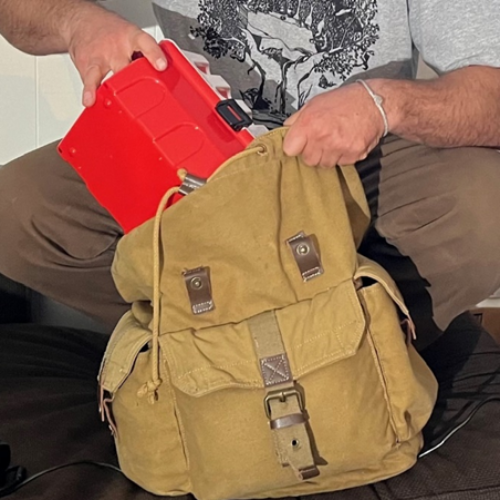
Your emergency fire kit should be on you at all times, and it should not take up too much space.
Many of the things we teach at The Survival University are meant to be used only if you come across the components in an actual survival situation. For example, you should not carry a broken lighter; instead, practice with a broken lighter so you can use the skill if your lighter breaks in the field or if you come across a broken lighter. The key to survival gear is not about having every possible fire-making method in your kit, but about having what is reliable and practical for real-life emergencies.
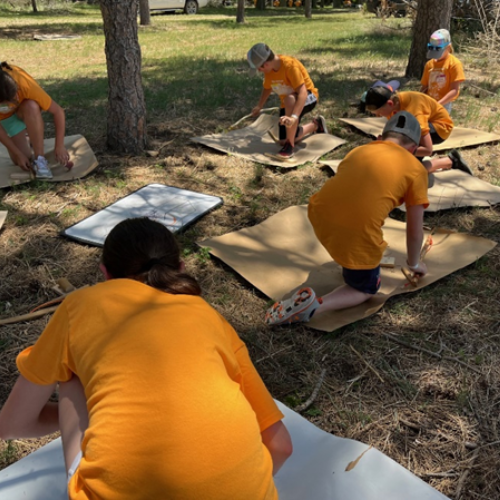
Teaching young adventures to use bow drill is fun and helps them understand fire at a whole new level.
If you want to introduce your kids to fire-making and other survival fundamentals in a fun, hands-on way, our Science of Survival (Kids and Family) course is the perfect opportunity to learn together in a safe, engaging environment
This brings us to the idea of practice kits vs. real kits. Practice kits are exactly what they sound like: kits you use to practice different fire-making methods, either in class or at home. A bushcraft kit may serve as a practice kit, containing items like flint and steel, solar fire kits, and whatever friction fire method you are currently working on. But do not confuse your practice kit with your actual emergency fire kit. The best way to think of it is this, you can have many kits for fun and practicing your skills, but you should also have one kit for that moment when the person you love the most needs fire as fast as possible. This last kit is a true survival fire kit.
If you’re new to fire-making and want hands-on training, our 2-Day Survival for Beginners Course is a great place to start. You’ll learn the fundamentals of fire, shelter, and water so you’re prepared for real-world survival situations.
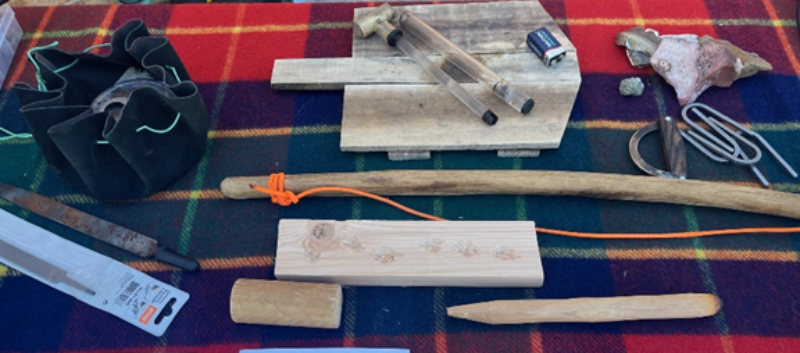
A good PRACTICE kit contains any skills you are currently working on.
I have a bushcraft kit that includes flint and steel, solar fire tools, ferro rods, and matches or a lighter. It also holds whatever friction fire method I am currently working on. At home, I keep a much larger kit that includes even more tools, as I need to stay proficient in a variety of fire-starting methods. However, my emergency fire kit is much simpler. It is designed for real-life situations where speed and reliability matter. It includes one reliable open flame source—either a lighter or matches, one ferro rod, and as much guaranteed tinder/fuel as I can fit in the kit. Personally, I really like cotton balls soaked in petroleum jelly or pitch wood because they light quickly and burn hot.
“When you need fire most, is when fire is the hardest to make.” ~Paul Kirtley
The Three Components of Fire: Heat, Fuel, and Oxygen
To create a fire, you need to ensure that you have heat, fuel, and oxygen. These three elements make up the “fire triangle,” and without all of them, fire cannot be ignited or sustained. Once you start the fire, growing and maintaining it will also be dependent on these three components.
- Heat is the initial spark or flame that ignites the fire. In out kit this can come from matches, a lighter, or a ferro rod. Having a reliable heat source in your fire kit is key to starting a fire, even under the most challenging conditions. Balance is incredibly important here. A candle is certainly heat, but it will never light a large log on fire. One of the reasons we pack so much guaranteed fuel is to make sure we have something that will capture our heat, no matter how small, and aid us in transferring that heat to larger sources of fuel.
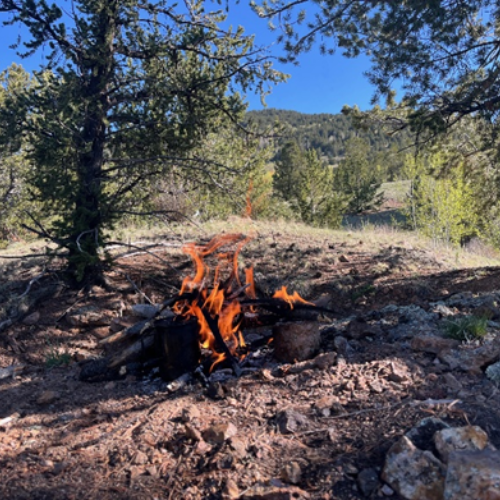
Fire is just heat transferring from smaller fuel to larger and growing as it goes.
- Fuel is any material that can burn. In a survival setting, this can include dry wood, leaves, and other natural materials. It is important to gather dry, easy-to-ignite fuel for the best chance of starting a fire quickly. This fuel needs to be as dry as possible and again it must be in balance. Baby fires need baby food. Many a student has put out a fire by forgetting about balance and putting too large a piece of fuel onto their fire. We can find many reliable fuels in the field. With just a little processing these fuels will accept small low-heat sparks if need be. But in our kit, we skip all that. Every bit of space should be packed with fuel that not only ignites easily but burns long and hot.

Small heat needs small fuel. Prepare different sizes of fuel in advance to make sure your heat does not go out.
- Oxygen is the air that feeds the fire and helps it burn. Without it, the fire cannot grow. Creating space around your fire and ensuring airflow is critical for its success. Many students like to pack some type of bellows to assist with oxygen. There is nothing wrong with that, we even include them in the kits for our family class for the soaked tinder drill and burn bowl. But the truth of the matter is this, learn to process your materials and learn a real fire lay, and oxygen takes care of itself. The fire lay I teach in the 5-day Intermediate and the Essentials of Survival is one of the oldest methods in print, it regulates its own oxygen, and I swear rain just makes it mad. A proper fire lay will manage your oxygen for you. If nothing else just remember not to fill your fire with so much fuel there is no space for air. Also, add your fuel in such a way that there is at least a pinky finger between each piece. This is far enough away to allow oxygen, but close enough to let heat transfer from piece to piece.
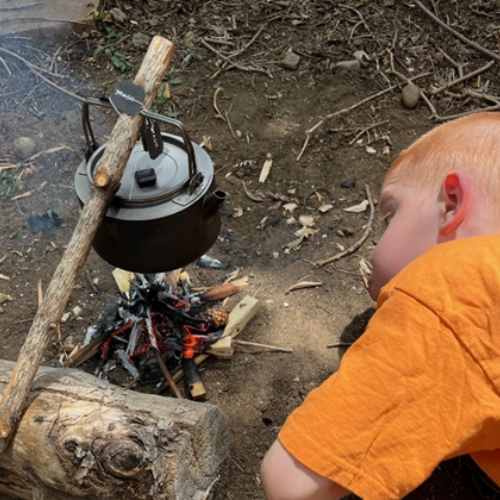
All fire needs air, too little smothers it and too much puts it out. With all parts of the fire triangle, think balance.
Packing a Fire Kit for Survival
Now that you understand the importance of heat, fuel, and oxygen, it is time to pack your fire kit for your survival adventures. A well-organized fire kit will ensure that you have the necessary tools to start a fire in any situation.
For those who want a deeper dive into survival fundamentals, including fire, water purification, and shelter-building, check out our 3-Day Outdoor Survival Basics Course. This course gives you practical experience in the skills needed to handle the outdoors with confidence.
Here are some of the top items you should include:
- Waterproof Matches or lighter: Keep your matches dry, even in the wettest conditions. A lighter is an easy-to-use option for starting a fire in most situations. The key concept here is an instant open flame. So item one into the kit is some type of instant open flame option. Now certainly both lighters and matches have some limitations and weaknesses. That is why we back it up with item number two, the ferro rod.
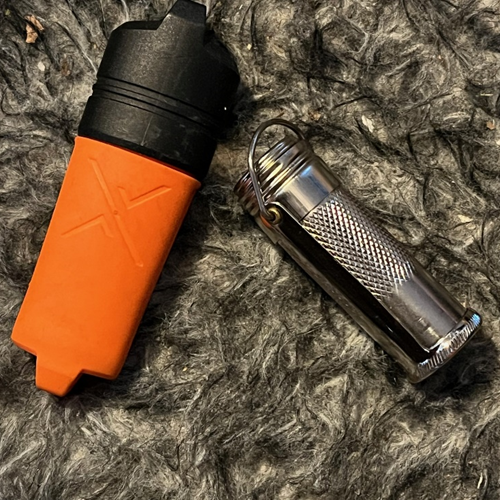
Lighters, matches, or some form of instant open flame should be checked before each adventure.
- Ferro Rod: A reliable tool that works in almost any weather. This tool will generate a shower of incredibly hot sparks that will set your fuel alight almost as fast as your lighter does. We will be doing a detailed blog on picking, using, and practicing your ferro rod soon.
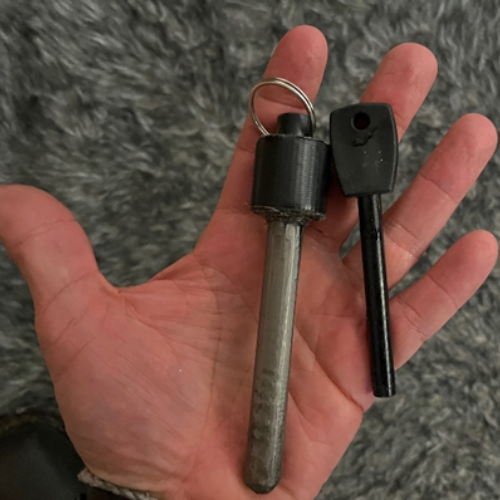
Larger Ferro Rods have more surface area to make sparks. Any type of handle can improve leverage and ease of use.
- Fuel: Items like cotton balls soaked in petroleum jelly, tinder sticks, or fire-starting cubes to help get the fire going quickly. Our fuel must both be quick to catch a flame and burn long and hot. We want at least 3 minutes of hot flame to get fire in the worst situations. Take a cotton ball or jute twine for instance. Both will take to fire rather quickly. But they also burn out rapidly. Soak either in wax, petroleum jelly, or better yet a mixture of both and whamo! You have a quick starting hot burning fire fuel. It can be store-bought fuel or any number of other homemade options. The core concept here is dry materials that catch fire quickly, from even weak sources, and burn hot for at least 3 minutes. If you are buying materials, be extremely careful of some chemical-based products. I love many of these products, they are easy to use and great for teaching and building confidence. But many of the coolest ones have chemical shelf lives and will quit working after a certain amount of time stored in your kit.
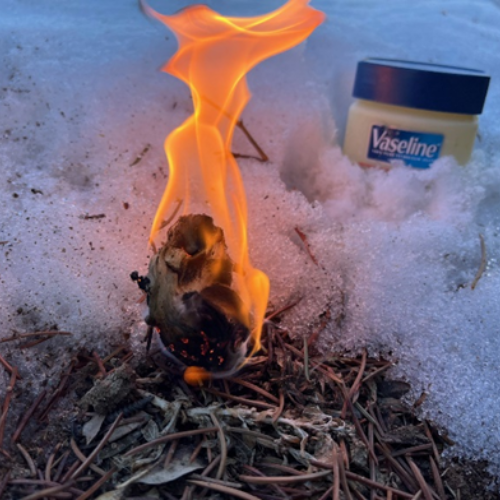
Cotton balls with petroleum or wax rubbed added will burn hotter and longer. They will even take a spark from a broken lighter.
- Waterproof Container: Store all your fire-starting tools in one safe, organized place. Once you pick a container throw it in the full sink or bathtub. You are looking for two things, does it float and does it stay dry? Now pack that container up with your kit and run the test again.
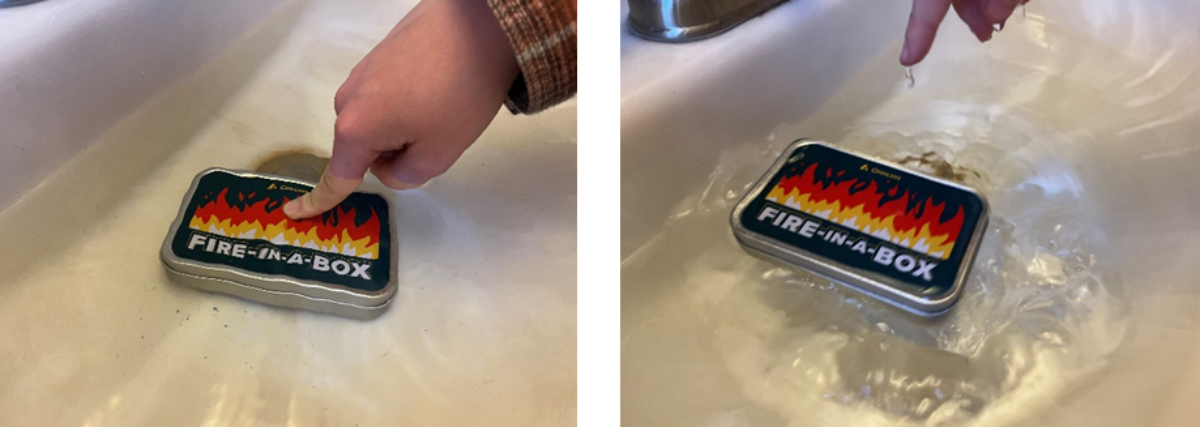
You should be able to push your kit under water for a few minutes and it should pop right up and float when you move your fingers. Everything should be nice and dry too.
How to Use Your Fire Kit
To successfully build a fire in a survival situation, you need more than just the right tools—you also need to know how to use them. We have a great video of the kit I use when heading up north to the really cold areas where seconds can separate life from death. Watch it here: Click to Watch We will also be writing more blogs with skills and practice drills, but for now here are some basic rules to help your fire success:
- Prepare the Fire Site: Find a safe, clear space away from anything flammable. Dig a small pit if possible to contain the fire. If the ground is wet you should build a small flour in this pit, and use the driest fuel you can find.
- Gather Fuel: Collect small twigs, leaves, and dry materials to form the base of your fire. Once the fire is going, you can add larger pieces of wood. Try not to collect your tinder from the ground. Up in a tree, in the sun and wind, and away from ground moisture is best. Like the old timers used to say, “Higher is drier.” Process your Tinder and kindling down. If using a match to start a fire; your initial fuel should be smaller than the match stick. Then add fuel that just grows progressively bigger. From match stick size to pencil, to sharpie, to pinky, to middle finger, to half a wrist, to full wrist, and on up to leg size if the situation requires. Like Old Crooked Stick used to say, “Your fuel is too big, remember baby fire needs baby food.”
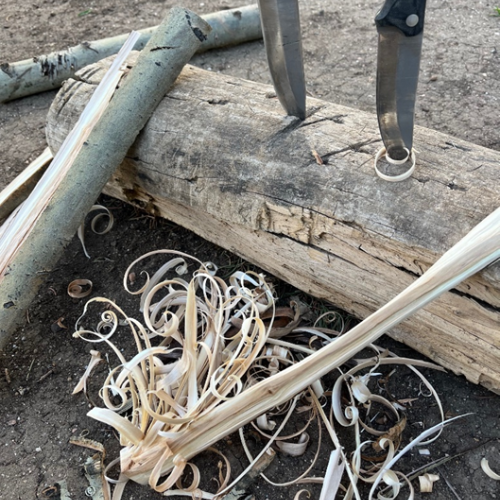
If you cannot find small fuel for your fire, then make some by breaking, splitting, and or cutting larger fuel down to size.
- Use Your Fire Starter: Light your cotton ball, or other tinder, with a match, ferro rod, or lighter. Make sure the tinder catches fire before adding your kindling. Mors used to say that tinder was anything that would light from open flame in a quick count of 1,2,3,4,5. Anything longer then that needs to be processed down to a smaller size.
- Feed the Fire: Gradually add larger pieces of wood to the fire to keep it going. Leave space around the fire to allow oxygen to flow.
If you’re ready to push your skills even further, our 5-Day Outdoor Survival Skills Intermediate 201 Course takes fire-building to the next level, along with advanced navigation, wild edibles, and survival challenges to truly test your abilities.
Final Thoughts on Fire Kits
Mastering fire-making is one of the most important survival skills you can learn. By understanding the three components of fire—heat, fuel, and oxygen—and packing a reliable fire kit, you can be ready for any situation that comes your way. Whether you are using your fire kit for warmth, cooking, purifying water, or signaling for help, having the right tools and knowledge can make all the difference.
At The Survival University, we teach the value of practicing different fire-making methods while keeping your emergency fire kit simple, reliable, and ready for action. So, be sure to pack your fire kit with only what you truly need and remember: in the wild, sometimes less is more!
We would love to hear about your favorite fuels to pack in an emergency kit and I can not wait to see pics of your kits. Send them to us, or tag us on social media.
Keep those kits basic and reliable, I can not wait to see you on the adventure trail,
Hutch
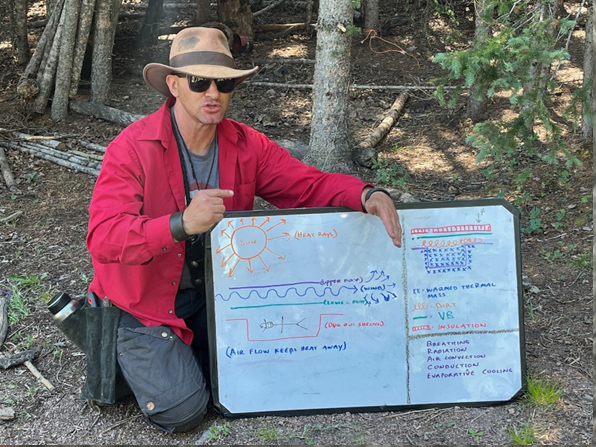 Instructor Bio:
Instructor Bio:
Aaron “Hutch” Hutchings is a seasoned survival, bushcraft, and wilderness living instructor with years of experience both as a student and a teacher. He is the owner of Ready Set Adventure Box (www.readysetadventurebox.com) and serves as a lead instructor at The Survival University (www.thesurvivaluniversity.com), where he teaches both beginner and advanced courses, as well as runs youth and family programs. Hutch has studied under some of the biggest names in the survival industry, and has even worked with a few of them directly.
A former Marine and lifelong Boy Scout, Hutch grew up immersed in outdoor skills, thanks in part to his grandfather, another outdoor instructor who used training with survival legends as rewards for achieving goals. Hutch is also the author of four books and brings a unique perspective to his teaching as someone who is autistic. His passion for survival skills and outdoor education shines through in every class he teaches.
Leave a Comment
Recommended Gear List For Courses
Colorado is a cold weather climate most of the year and with our survival school at 9400 feet, it can get frigid at night, even…
Mastering Fire for Survival: How to Pack a TRUE emergency fire kit
Learn to pack a reliable survival fire kit with the right tools for warmth, cooking, and signaling. Keep it simple, effective, and ready for any...
Surviving the 2025 LA Fires: How to Evacuate Safely with Your Bug Out Bag and Plan
Learn how to prepare for emergencies with a bug out bag and evacuation plan. Discover key survival tips from the 2025 LA fires to stay...
